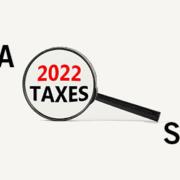Child tax credit: The rules keep changing but it’s still valuable
If you’re a parent, you may be confused about the rules for claiming the Child Tax Credit (CTC). The rules and credit amounts have changed significantly over the last six years. This tax break became more generous in 2018 than it was under prior law — and it became even better in 2021 for eligible parents. Even though the enhancements that were available for 2021 have expired, the CTC is still valuable for parents. Here are the current rules.
For tax years 2022 and 2023, the CTC applies to taxpayers with children under the age of 17 (who meet CTC requirements to be ‘’qualifying children’’). A $500 credit for other dependents is available for dependents other than qualifying children.
CTC amount
The CTC is currently $2,000 for each qualifying child under the age of 17. (For tax years after 2025, the CTC will go down to $1,000 per qualifying child, unless Congress acts to extend the higher amount.)
Refundable portion
The refundable portion of the credit is a maximum $1,400 (adjusted annually for inflation) per qualifying child. The earned income threshold for determining the amount of the refundable portion for these years is $2,500. (With a refundable tax credit, you can receive a tax refund even if you don’t owe any tax for the year.) The $500 credit for dependents other than qualifying children is nonrefundable.
Credit for other dependents
In terms of the $500 nonrefundable credit for each dependent who isn’t a qualifying child under the CTC rules, there’s no age limit for the credit. But certain tax tests for dependency must be met. This $500 credit can be used for dependents including:
- Those age 17 and older.
- Dependent parents or other qualifying relatives supported by you.
- Dependents living with you who aren’t related to the taxpayer.
AGI “phase-out” thresholds
You qualify for the full amount of the 2022 CTC for each qualifying child if you meet all eligibility factors and your annual adjusted gross income isn’t more than $200,000 ($400,000 if married and filing jointly). Parents with higher incomes may be eligible to claim a partial credit.
Before 2018 and after 2025, the income threshold amounts for the total credit are lower: $110,000 for a joint return; $75,000 for an individual filing as single, head of household or a qualifying widow(er); and $55,000 for a married individual filing a separate return.
Claiming the CTC
To claim the CTC for a qualifying child, you must include the child’s Social Security number (SSN) on your return. The number must have been issued before the due date for filing the return, including extensions. If a qualifying child doesn’t have an SSN, you may claim the $500 credit for other dependents for that child.
To claim the $500 credit for other dependents, you’ll need to provide a taxpayer identification number for each non-CTC-qualifying child or dependent, but it can be an Individual Taxpayer Identification Number, Adoption Taxpayer Identification Number or SSN.
Final points
If you expect the CTC to reduce your income tax, you may want to reduce your wage withholding. This is done by filing a new Form W-4, Employee’s Withholding Certificate, with your employer.
These are the basics of the CTC. As you can see, it’s changed quite a bit and the credit is scheduled to change again in 2026. Contact us if you have any questions.
© 2023












